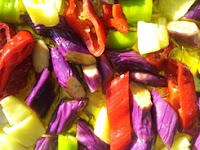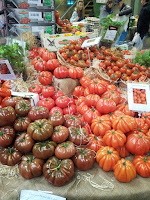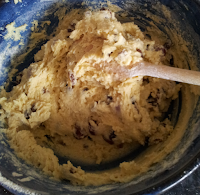Sunshine and wellness
 |
A wonderful display at
Borough Market, London, SE! |
We all have our opinions, but whatever makes us smile, we all feel great and lighter on our feet for at least a few minutes and possibly even the rest of the day.
Don't get me wrong, a little more money, nice holidays and a meal in a nice restaurant from time to time also plays a part. For me I'm never more happy than when cooking and creating beautiful things.
With the onset of spring this year, I was so happy to feel the warm sunshine and seeing fresh new produce in the markets, that the unintentional beaming of my smile and the quite involuntary giggle whilst walking down a sunny street made the wait through Winter a prize in itself
Working in central London with the benefit of some very iconic places and with the wonderful Borough Market in particular, made me reassured of the seasons. So often when you live in or around a big city, you don't always appreciate the passing of the days, especially when so many of them seem the same.
 |
Golden Beach
Thassos |
We've heard a lot about wellness, about reducing stress and anxiety, and about keeping positive. Whether this is about loosing your job or recovering from grief, or perhaps something even more personal, this blog is meant to bring that smile, that sense of sunshine and to share what can make a wet or cold day, warm, sunny and bright.
It may only be a picture, it may only be a bowl of colourful fruit, and may be just a smile from a stranger, a shared joke on a train or the kindness of a work colleague. However, you and I can only appreciate these things if we are open to noticing them as they happen and sometimes to create these situations for others.
When I need to feel the pressure of the sun I imagine a perfect place. The beach pictured above is Golden Beach in Thassos, the most northern of the Greek islands and probably the most green. It is the home of the purest, whitest marble and its beaches are made of sand that glitter in the sunshine. The island itself is situated on an underwater plateau which, in essence, means you can walk out to sea for more than a 100 metres or more around parts of the shoreline. The walking is incredible and the friendliness of the people means you are smiling at complete strangers with not a clue as to what each other is saying. If you're like me, a bus is a must on holiday and Thassos has its charm and the bus service, although infrequent at times, is still a great way of getting around. But remember to take your route map, just in case you get on the wrong one, it just adds to the adventure.
 |
Serpentine Gallery
Pavilion 2015
by Selgascano |
Colour also plays a big part for me, as well as how the light enhances the hues and their depth. For part of our 50th year, my partner and I went to see the Pavilion installation at the Serpentine Gallery by Selgascano, and a wonder it was too. The picture is taken from the inside of the structure looking out to Hyde Park. The embedded link gives you more of a holistic idea of the project itself. The amazing thing was that it was free and it inspired the idea of colour and form and the fact you could walk right inside made the whole visit a huge big smile in and all of its own.
 |
Colour is the only
way to smile |
An unexpected bit of sunshine were these artificial flowers and the situation which I found myself in on a regular visit to Ikea, not what I was looking for, but I had to touch them to make sure they weren't real. The lady opposite smiled and we both laughed. Obviously I had less restraint that she did. She did reassure me that she had been about to do the same but I had beat her to it. The experience shared, I wondered after if the experience was remembered by her as much as me. That friendly interaction with people can be all you need to lift your mood and to connect with another human being, no matter how brief, can be the best cure ever for the blues.
We all need a connection. We all need to be reassured that we are not alone. So a simple act of sharing food, preparing it and perhaps sharing that experience as well, is why large families, whether biological or through social groups, seem more emotionally healthy than when we try to go it alone.
So in this spirit of reaching out, sharing experiences and looking for that sunshine that we all need, may I welcome you to the sunshine attic.
To make this blog a little more interactive, I would like to ask my readers to submit their "smile" of the day (or week) and I'll put together a regular gallery. So, if you have a picture, an experience or simply a haiku that just needs to be shared, please let me know.
 Our sitting room is shed in sunshine in the mornings. If we have flowers (and we often do) on the coffee table, their smell can be overpowering at time with the heat of the morning.
Our sitting room is shed in sunshine in the mornings. If we have flowers (and we often do) on the coffee table, their smell can be overpowering at time with the heat of the morning.
































